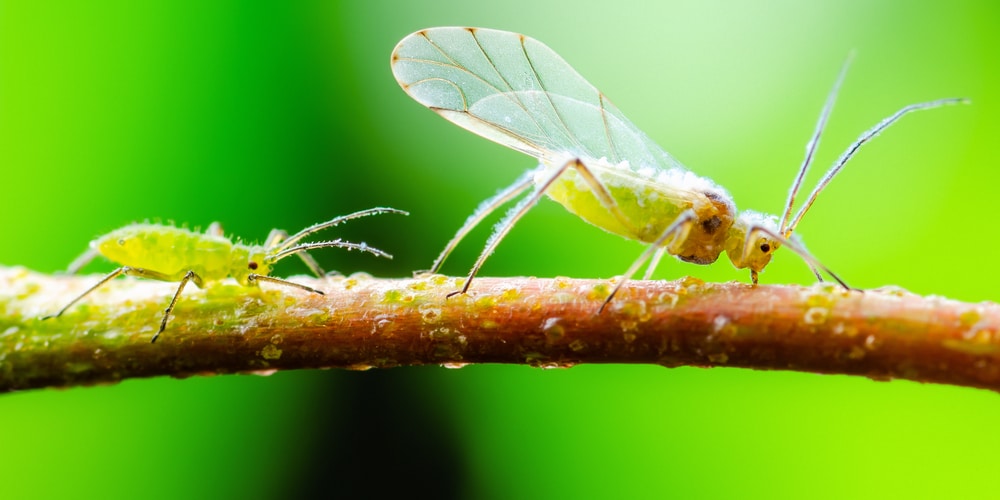Shrubs and flowers add interest and charm to the spaces they are grown. While gardeners need to water their plants properly and ensure they get sufficient amounts of light, they are also obliged to monitor the plants for signs of pests constantly.
If you have noticed tiny yellow bugs on your plants, you might be concerned about knowing what they are and if they will damage your plants. After all, no gardeners want to see insects wreaking havoc on their plants.
Read on to know more about those small yellow bags roaming around your garden and how to get rid of them.
Identifying the tiny yellow bugs: What are they?
The tiny yellow bugs you are seeing in your garden are most likely to be Aphids. Aphids are tiny insects, typically measuring about ¼ inch in size, which makes it relatively difficult to see and identify a single aphid with the naked eye.
Despite their small size, aphids can multiply very fast and ruin your plants. That’s why you need to take immediate action to control their population and spread. Thankfully, they move relatively slowly, which makes it easier to control them.
Knowing how to correctly identify these pesky insects is very vital when it comes to controlling their population. Well, while the most common aphids are yellow, some come in a wide range of colors, including light green, pink, white, black, and brown, all depending on the species.
They all have pear-shaped bodies and long antennae, with only a few species having cornice – tubes rearward from their abdomen.
Nymphs are nearly identical to adults, except that they’re relatively smaller.
In adulthood, aphids are wingless. However, some species can mutate into a winged form when their colonies become overcrowded. This makes it easy for them to fly to other plants to reproduce and start another colony.
These small yellow bugs will feed in large groups, but you can find them in small groups or as individuals.
What damage do tiny yellow bugs cause?
With their tiny, soft bodies, aphids look harmless. Surprisingly, they can cause a lot of damage when unchecked.
Aphids, both nymphs and adults, feed on plant juices. Their mouthparts are well adapted to piercing and sucking, which makes it easy for them to attack leaves, flowers, buds, fruits, stems, and sometimes roots, depending on the species. In the long-term, this can cause the foliage, flowers, and fruits to distort and leave to drop.
Well, while aphids’ feeding can be damaging, the biggest concern is how they aid the spreading of viral diseases and cause mold. As they feed, aphids produce salivary secretions, which inject into the plant leaves, which can cause misshapen, curling, stunted, or yellowing leaves. They also excrete honeydew which supports the fungal growth of sooty mold.
Sooty mold causes a black coat to form on the plant leaves, which makes it difficult for sunlight to reach the leaf surface. This impedes photosynthesis, which can cause the plant to die.
How to get rid of aphids
No one wants to see insects damage their plants. If the small yellow bugs have become a nuisance or just arrived in your garden, here are ways to eradicate them.
1. Remove them physically
You can effectively combat the spread of the tiny yellow bugs by removing them physically. If the infestation is on a few branches, you can prune those branches and put soapy water on them to kill them. You can also pinch or brush the critters from the leaves and stems.
2. Wash the affected plants with a strong spray
This is simple. If you have medium-sized aphid colonies, spray affected plants with pressure water. The method works effectively but should not be used for plants with fragile and younger tips.
3. Apply neem oil
Neem oil and other horticultural oils work effectively to repel yellow bugs. It also interferes with the aphids’ hormone system, making them unable to grow and lay eggs.
4. Spray with soapy water
Soapy water is undoubtedly one of the well-known remedies for aphids. With this method, mix a sensible amount of dish soap with water and spray the solution on the affected plants.
5. Attract native predators and parasites
Like other critters, aphids have enemies. As such, encouraging predators and parasites can help regulate the spread of aphids.
Some beneficial insects to attract are ladybugs, mantis, and lacewings.
6. Use chemicals
Chemicals are usually the last resort when it comes to controlling bugs. Aphids reproduce very fast, meaning they can re-infest quickly. If the infestation is severe, consider using pesticides to get rid of the yellow bugs.

